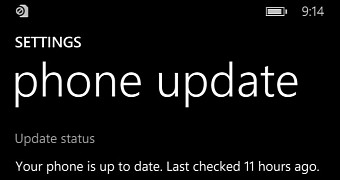If you're a Windows Phone user, you're most likely tired of waiting for new updates for your devices, even though Microsoft announces each with much fanfare every time.
The Denim firmware update for Lumia devices is living proof in this regard, as Microsoft announced it last year, but the rollout only started in December for a limited number of devices. And yet, here we are in February and some phones haven't even received Denim yet, despite the fact that Microsoft was initially expected to ship it to all models by the end of January.
In most of the cases, when it completes development of a Windows Phone update, Microsoft sends it to carriers across the world, who in their turn start a lengthy testing process on absolutely all Lumia models they are selling at a certain time.
This is actually the main cause for the delay. Some carriers need too much time to test the updates on their Windows Phone devices, while others move very fast and release them to their customers before everyone else. This is why a Lumia 1520 in Australia, for example, could get Denim before a Lumia 1520 in Russia or any other country where carriers would need more time to test each release.
Delays also caused by bloatware
Gabriel Aul, head of the Windows Insider program, also explained in a tweet that, in some of these cases, carriers also need additional time before giving the go-ahead of Windows Phone updates to install their own features and apps to the images.
“Mobile operators can add features and apps to the images, which means an update needs to be done in partnership with them,” he said.
Basically, carriers have full control over the updates you get on your Windows Phone model, so most of the delays are caused by their lengthy testing process, rather than by Microsoft's. So users who are blaming Microsoft for bringing out updates so slow aren't entirely accurate, although there are times when Redmond could move a bit faster to keep everyone updated.
But working with carriers to approve Windows Phone updates is a double-edged sword. Sure, Microsoft makes sure that its updates are working like a charm on all devices without even conducting thorough internal testing, but carriers are free to install whatever they want on the releases that end up on users' phone.
It's a well-known fact that bloatware has gone beyond the acceptable limits in some cases, so if Microsoft took full responsibility for bringing out updates, this issue could be addressed once and for all.
Finally, things could change with Windows 10 for phones, but Microsoft hasn't expressed any intention to adopt a different update release system until now. The new OS will most likely come out in the fall of 2015, so there's still enough time for significant improvements in this regard.

 14 DAY TRIAL //
14 DAY TRIAL //